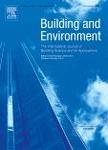版权所有:内蒙古大学图书馆 技术提供:维普资讯• 智图
内蒙古自治区呼和浩特市赛罕区大学西街235号 邮编: 010021

作者机构:Aviat Acad Coll Appl Studies Belgrade Serbia Univ Belgrade Vinca Inst Nucl Sci Natl Inst Republ Serbia Belgrade Serbia Univ Belgrade Fac Technol & Met Belgrade Serbia
出 版 物:《BUILDING AND ENVIRONMENT》 (Build. Environ.)
年 卷 期:2025年第270卷
核心收录:
学科分类:0830[工学-环境科学与工程(可授工学、理学、农学学位)] 08[工学] 0813[工学-建筑学] 0814[工学-土木工程]
基 金:Ministry of Science Technological Development and Innovation of the Republic of Serbia [451-03-65/2024-03/200 135]
主 题:Monte Carlo Air pollution Heavy metals Health risk Positive matrix factorization Indoor
摘 要:Source-specific risks of fine particulate matter (PM2.5)-bound trace elements to student s health in a school located in an urban area were evaluated. The concentrations of the 29 elements in PM2.5 were analyzed indoors and outdoors at the school. PM2.5 concentrations ranged from 5.33 to 47.5 mu g/m3 indoors to 8.22-83.1 mu g/m3 outdoors. Besides Ca and Fe being the most abundant elements analyzed in PM2.5 both indoors and outdoors, the levels of Zn, Cr, Pb, Cu, Mn, and Ni were significant. The indoor/outdoor ratio of PM2.5 for most elements was below one. Positive matrix factorization (PMF) identified six primary sources with different loadings of PM2.5- bound toxic elements, whereas traffic and resuspended dust were the predominant element sources. The health risk assessment results indicated that the risks for students due to inhalation exposure to elements were within the safety threshold. Nickel, Cr, and Mn dominantly contributed to non-carcinogenic risks, whereas higher cancer risks were associated with Cr and, to a lesser extent, with As. The hazard index and total carcinogenic risk were within acceptable levels. The Monte Carlo simulations implied that vehicle-originated elements contributed the most to non-carcinogenic and carcinogenic health risks. These findings underscore the need to address air pollution in urban school environments more precisely, focusing on protecting young students from exposure to PM2.5-bound toxic elements.